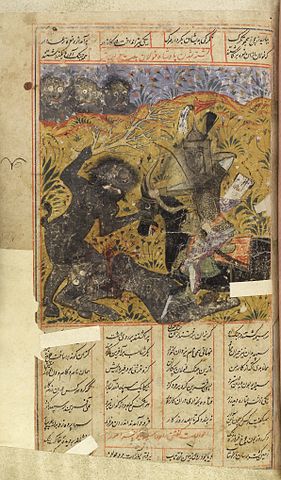The legend of the ghoul, a creature often associated with graveyards, death, and the consumption of human flesh, has its origins in Middle Eastern and Arabian folklore. The concept of the ghoul has evolved over time, and it has been depicted in various ways in literature, art, and popular culture. Here is an exploration of the origins and evolution of the ghoul legend:
1. Arabian Folklore:
- The ghoul is believed to have originated in Arabian folklore, particularly in the stories of “One Thousand and One Nights” (Arabian Nights). In these tales, ghouls are malevolent and often female supernatural creatures that lurk in the desert and graveyards.

2. Shape-Shifting Nature:
- Ghouls are often described as shape-shifters, capable of assuming the forms of animals or humans. This ability to change their appearance adds to their sinister nature.
3. Corpse Eaters:
- Ghouls are notorious for their association with the consumption of human flesh, particularly the corpses of the dead. In some versions of the legend, they are depicted as grave robbers and necrophagists.
4. Variations in Descriptions:
- The descriptions of ghouls vary across different cultures and time periods. In some interpretations, they are more like malevolent spirits or demons rather than physical beings.
5. Influence of Islamic Beliefs:
- Islamic culture has had a significant influence on the concept of ghouls. In Islamic belief, ghouls are supernatural beings that inhabit desolate places and have a penchant for leading travelers astray in the desert.
6. Literary and Cultural Impact:
- The ghoul legend has had a lasting impact on literature and culture. It has been featured in numerous stories, poems, and films, often as a symbol of the macabre and the unknown.
7. Evolution in Western Literature:
- In Western literature and culture, the ghoul has been portrayed in various ways. It has been integrated into Gothic horror stories and served as a source of fear and fascination.
8. Modern Interpretations:
- In contemporary culture, ghouls have found their place in various forms of entertainment, from horror films to video games. Modern depictions of ghouls often draw from both their Middle Eastern roots and Western adaptations.
The ghoul, as a creature of darkness and death, continues to be a compelling figure in folklore and horror fiction. While its characteristics and attributes have evolved over time and across cultures, the ghoul remains a symbol of the eerie and the mysterious, reflecting humanity’s age-old fascination with the unknown and the supernatural.











